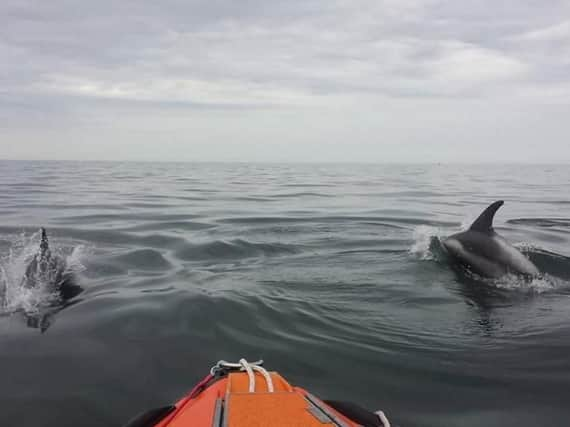Boost for dolphins and fish life as Marine Conservation Zones set up in North Sea


The Government has designated three areas of the North East coast among 23 new Marine Conservation Zones (MCZs).
Steve Lowe, Northumberland Wildlife Trust’s head of conservation, has long campaigned tirelessly for the creation of the zones throughout the UK.
Advertisement
Hide AdAdvertisement
Hide AdIn the North East, three new sites have been designated. Coquet to St. Mary’s, Farnes East and Fulmar, the furthest offshore site in the North Sea. These will also have a wider benefit to wildlife up and down the region's coast.
He said: “What great news for the wildlife living in the North Sea and elsewhere throughout the UK. We really welcome today’s designation of 23 Marine Conservation Zones and especially those off the North East coast.
“UK seas have the potential to be full of incredible life and colour but continued destruction has reduced them to a shadow of their former selves. Without these astonishing submerged landscapes there simply wouldn't be any fish, let alone fantastic jewel anemones, seahorses, dolphins, brittlestars amongst all the other wild and extraordinary creatures which are part of a healthy marine ecosystem.”
Marine Conservation Zones are a type of protected area at sea designated for habitats and species of national importance, including fragile seahorses, rare native oysters and even cold water coral reefs. Such protected areas are a tried and tested means of giving vulnerable species, including vital fish stocks, the time and space to recover.
Advertisement
Hide AdAdvertisement
Hide AdThe 23 new MCZs are special places and include cold water coral reefs, forests of sea fans, canyons and sandbanks, and an astonishingly varied range of submerged landscapes which support the stunning diversity of marine life found in the UK. They include Land’s End, one of the South-West’s most recognised areas and renowned for its rugged coastline, and the Cromer Shoal Chalk Beds in the North Sea, thought to be Europe’s largest chalk reef.
Not all experts are as happy with the announcement, which comes after an initial 27 zones were set up in a first phase of MCZs in 2013.
Professor Callum Roberts, at the University of York and one of the UK’s leading marine conservation experts, welcomed the new MCZs but said: “We need more because the network we have is far from complete. Despite the [50] MCZs, the UK’s rich marine life has very little protection. That may sound paradoxical, but six years after the Marine Act was passed, MCZs are still paper parks. They have no management at all, so life within them remains unprotected. They will be worse than useless, giving the illusion of protection where none is present.”
The 23 Marine Conservation Zones:
1. Coquet to St Mary’s
2. Farnes East
3. Fulmar
4. Runswick Bay
5. Holderness Inshore
6. Cromer Shoal Chalk Beds
7. The Swale Estuary
8. Dover to Deal
9. Dover to Folkestone
10. Offshore Brighton
11. Offshore Overfalls
12. Utopia
13. The Needles
14. Western Channel
15. Mounts Bay
16. Lands End
17. North-West of Jones Bank
18. Greater Haig Fras
19. Newquay and The Gannel
20. Hartland Point to Tintagel
21. Bideford to Foreland Point
22. West of Walney
23. Allonby Bay